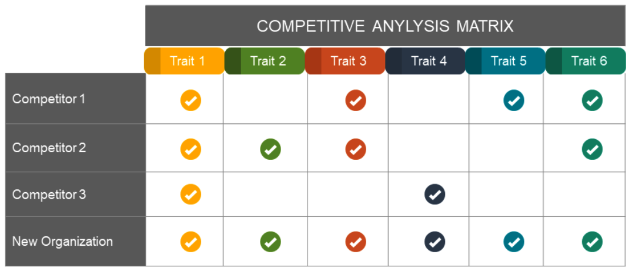
Have you ever managed a project that deals with data? If yes, you will understand when people say that this is one of the most challenging tasks you can ever handle. If your main responsibility is to manage a given project, you have to analyze different aspects such as process, programs, and people, among other essential elements, until you come up with a clear data report that can be used in making decisions.
It has been proved that every company generates a specific volume of data from its daily operations. When this data is not analyzed correctly, it brings more challenges since a lot of aspects need to be generated from the data and applied in making prudent development decisions within the fcompany. You can easily get overwhelmed with data, especially if you do not have a suitable means of processing and generating insights.
To make the entire process easier for you, you need to have reliable charts that you can use to outline and analyze the data to collect insights that can help you make the next step. The essential chart that you can have to eliminate all possible problems is the matrix chart. Remember that you need to choose a chart type that fully supports your data story to ensure that you are totally backed up.
A matrix chart sounds like something new among many people who have 't interacted with data. Let's get into details and outline everything you need to know.
What is a Matrix Chart?
If you are a data professional that has interacted with different data elements on several occasions, then you know exactly what a matrix chart is. Also, if you are a business owner to collect all the essential insights from your business data, you need to capitalize on this chart to get fast hand information regarding the general operation of your business. A matrix chart is used to identify the relationship's presence and strength between two or more lists of different items.
Also, a matrix offers a better means of outlining many-to-many data relationships with varying strengths. If you have this chart within your business, you are in a better position to understand the relationship and the strength of the data within your business. It's a good choice when you want to get a clear picture of the relationship between different data sets. When using this chart, you need to understand that the relationship between different data items is represented using a particular number or color.
The shape of the matrix template you opt to use depends on the number of data elements you intend to process. This means that you need to be keen when choosing the shape of your matrix since it mainly depends on the amount of data you intend to process.
How to Interpret a Matrix Chart?
When you closely look at a matrix chart, you will realize that it looks like a conjoined series of bars placed horizontally, sharing both the x and y axes. The horizontal bar of the chart is used to display either an increase or decrease in the presented data variables. When you note a smaller bar, it represents a decrease in the performance of the data variables, while a bigger bar is used to showcase growth in data performance.
The most crucial aspect you need to pay attention to is the x and y axes since they change depending on the nature of the data you are processing. Ensure that you are dealing with accurate data values to avoid any inconveniences that are likely to occur at the end of the process.
What is Diagonal Difference Matrix?
When and Why You Should Use a Matrix Chart?
There is no specific time when you have to use a matrix chart since it can be applied anytime you want to analyze and generate insights from data. You only need to apply them when you want to uncover the relationship between different data elements collected from different sources. However, you need to ensure that all the data falls in the right categories to avoid confusion during the presentation.
The matrix chart is good when you aim to identify any causal relationship in your data. This mainly occurs when there is troubleshooting to identify any possible challenges within the project you are handling. In addition, you need to use the chart when you want to visualize a complex data relationship, especially when dealing with massive amounts of data. The chart offers cutting-edge technology that helps business owners identify how variables interact.
If you are a project manager interview, you need to use this chart to identify the relationship between the organization’s objectives, causes, and factors. If you are dealing with two lists of different datasets, you can identify the relationship in a simple way that does not need a lot of complex data processing. When you realize that the data elements are closely related to more than a single element, you need to capitalize on using a matrix chart since other forms of visualization cannot depict the difference.
Also, if you realize that the connection between the data points is tangled, you will likely experience challenges in generating insights from the data. This means that you need to get a unique approach that will enable you to analyze the data in a simpler way to make it easier to get insights. A matrix chart has the freedom to transform data and uncover any existing hidden patterns that you need to understand to propel the business to the next great level.
A matrix chart can help you visualize any form of data regardless of how complex the data is. All you need to have is to ensure that you collect all your data values correctly and have everything you need to analyze at your disposal. This brings us to the next step on how you can create a matrix chart. The best way to make this happen is to create a matrix chart in Excel since the process is easier a d you don't need to understand technical data components.
You must install a third-party app, ChartExpo, which has the matrix chart by default. Ince you have installed the chart, you can easily get access to the chart and outline all your data in a way that you can easily read and identify any possible trends ad patterns within the data.
Conclusion
A matrix chart is an excellent type designed to help data professionals identify relationships and strengths between data elements. Provided that you have the right data you intend to analyze; it's easier to generate insights from your data using this chart approach. In addition, you can easily create the chart using ChartExpo via Microsoft Excel, which is easy and friendly to use.



